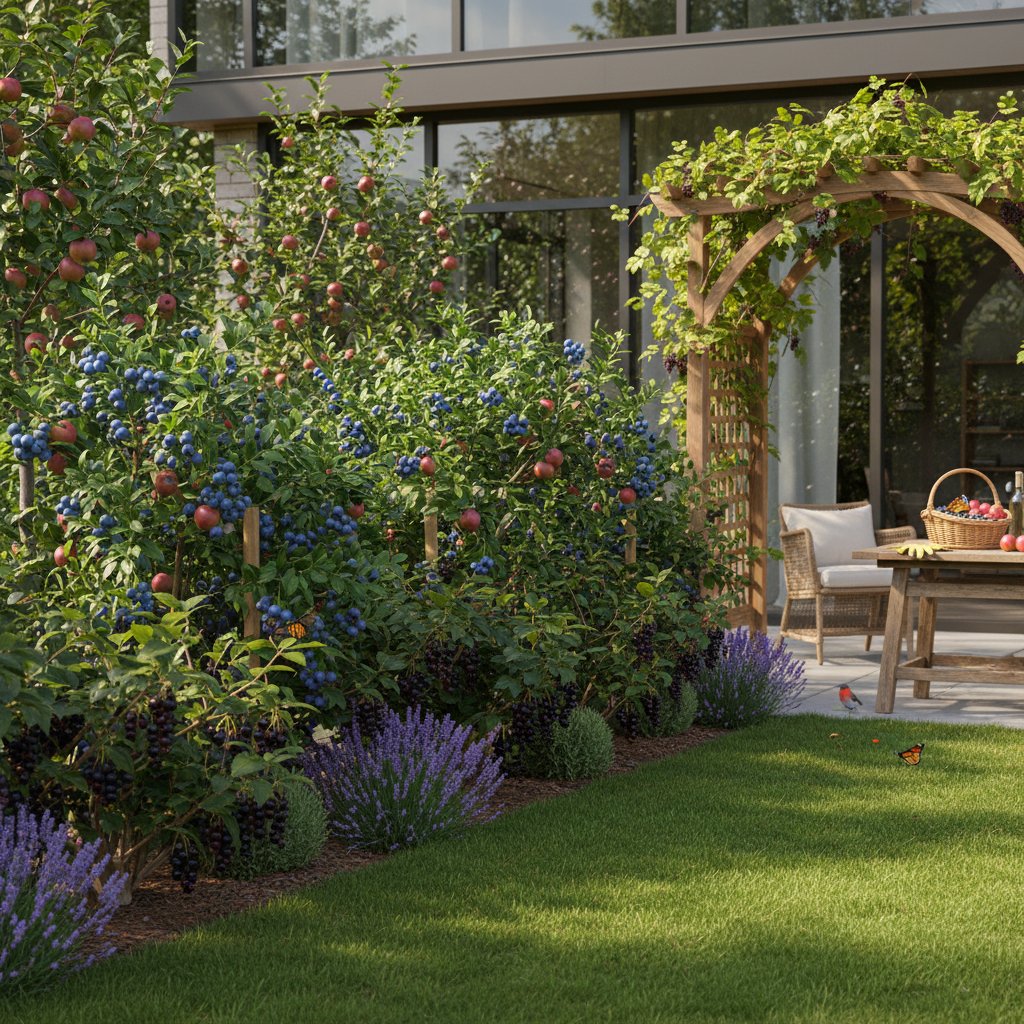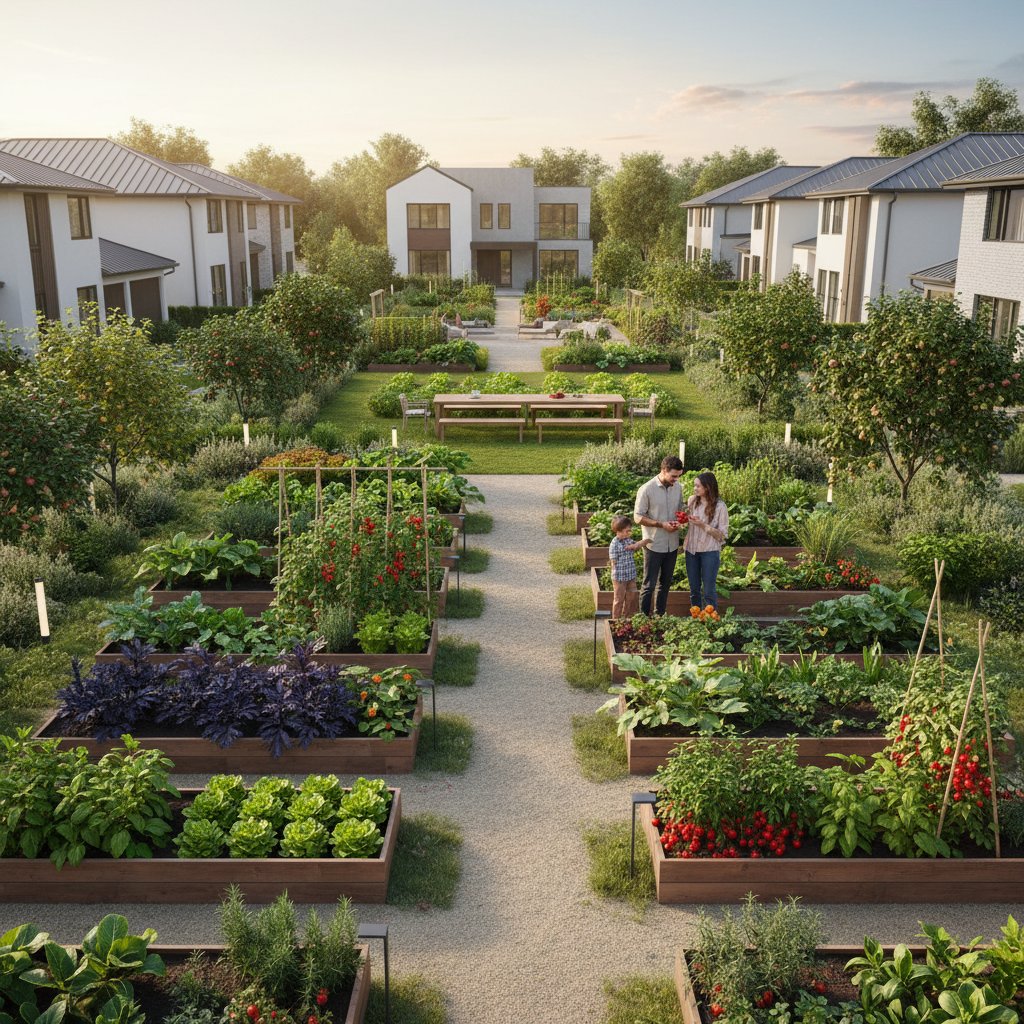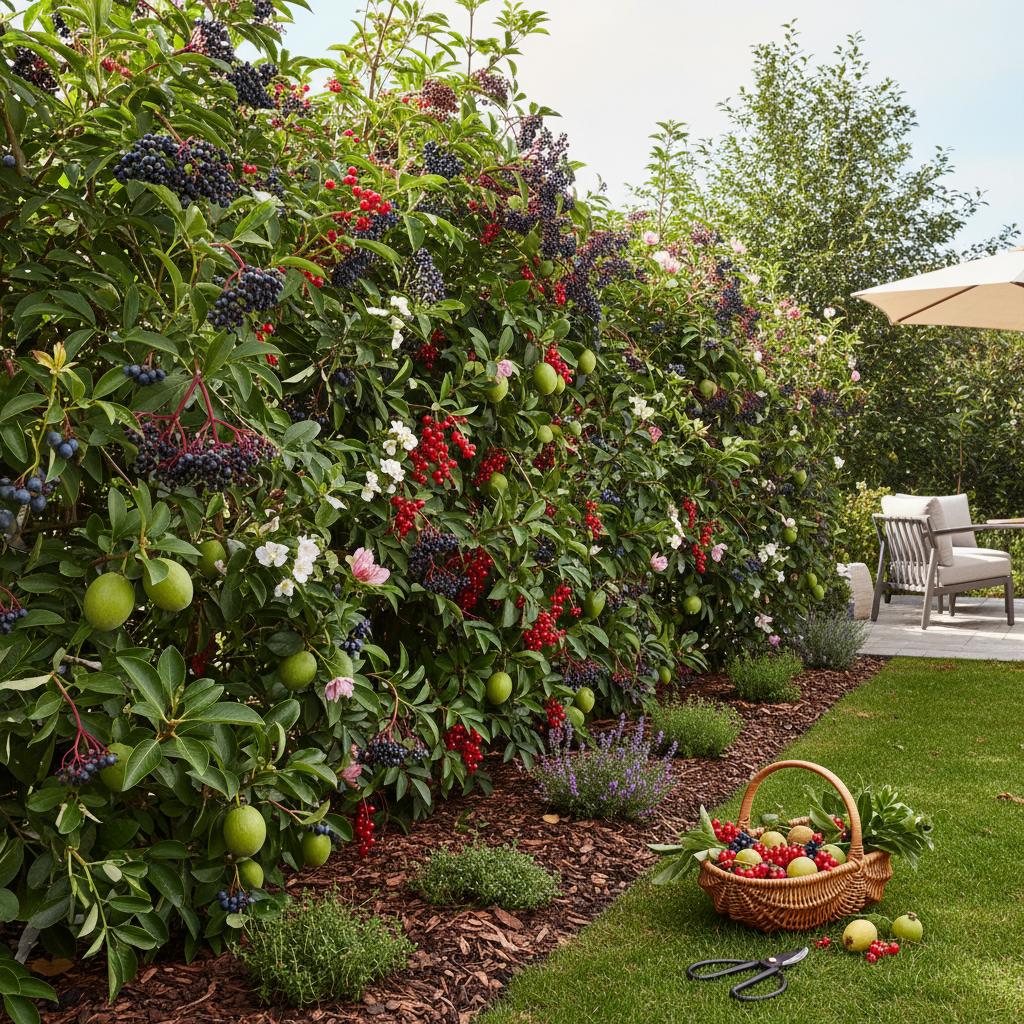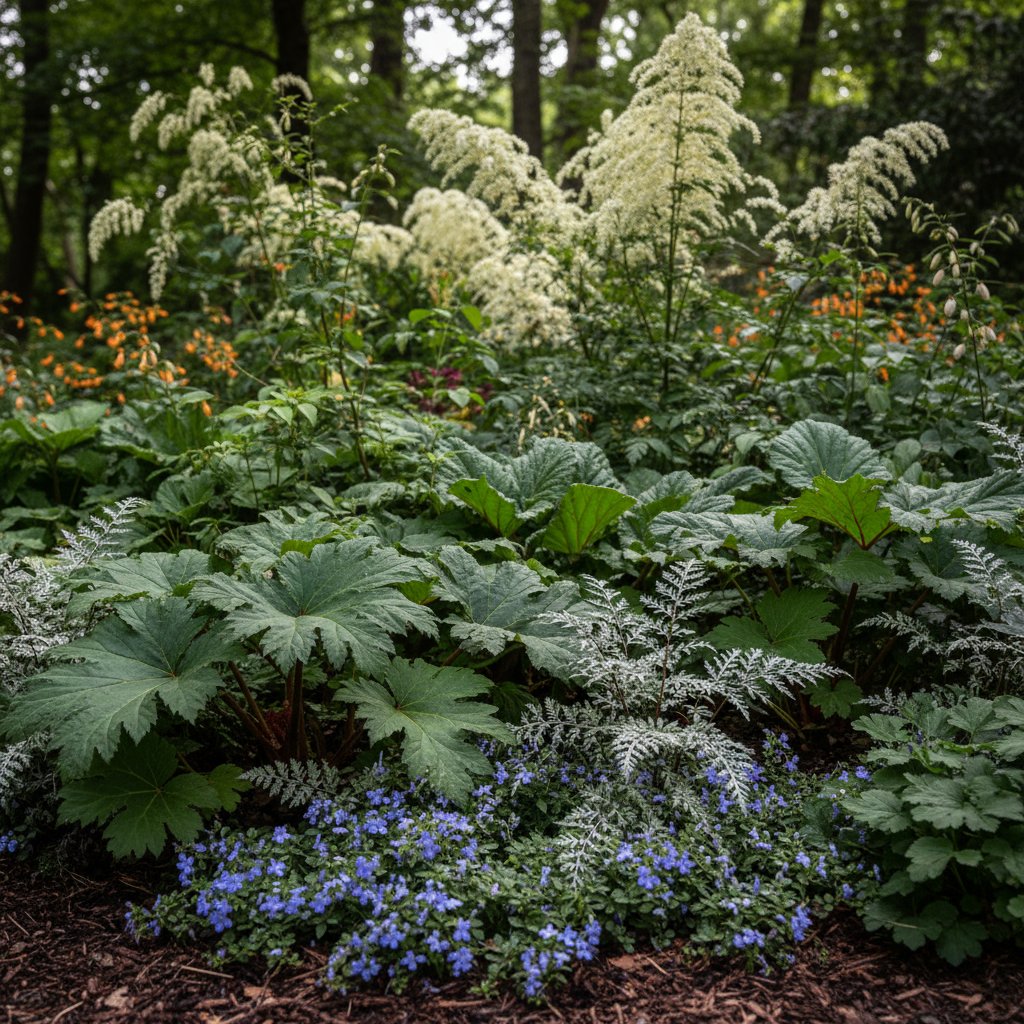Privacy Hedges That Harvest Fresh Fruit
Have you ever stood in your yard and wished for greater privacy, a quiet shelter from the outside world? Imagine a living green wall that softens property edges while attracting birds and bees. What if that hedge also provided fresh fruit for your table?
Combining privacy with productivity represents one of the most rewarding approaches to landscape design. Fruit-bearing hedges deliver beauty, functionality, and abundance in a single planting. These living boundaries evolve through the seasons, with spring flowers, summer fruits, and fall colors. Select the appropriate plants and plan carefully to create an edible barrier that nourishes both body and environment.
Selecting Suitable Fruit-Bearing Plants
Success depends on choosing varieties adapted to your local climate and compatible in growth habits. Consider these reliable options, each suited to hedge formation:
Blueberries
Blueberry bushes remain compact and visually appealing, yielding abundant crops. Their glossy leaves shift to red hues in autumn, extending ornamental value beyond harvest time. These plants thrive in acidic soil; amend neutral sites with raised beds incorporating peat moss and pine bark fines for optimal pH levels between 4.5 and 5.5.
Currants and Gooseberries
These shrubs develop into dense, controllable hedges that bear clusters of tart berries ideal for preserves or direct consumption. Red currants display vivid color when mature, enhancing garden aesthetics. Gooseberries feature translucent skins that add a quaint charm to borders; prune annually to maintain a height of 4 to 6 feet.
Raspberries and Blackberries
Brambles serve as effective living fences when trained properly. Opt for thornless cultivars to simplify upkeep. They create robust screens and produce substantial yields after establishment, typically within two years. Install a trellis system with wires spaced 18 inches apart to support canes and promote upright growth.
Serviceberries
Known also as juneberries, these reach small tree or large shrub size, offering delicate spring flowers followed by sweet, blueberry-resembling fruits. Their upright form suits mixed hedges, where varying heights introduce texture and enhanced screening. Plant at 4- to 6-foot intervals to achieve full coverage within three seasons.
Dwarf Apples or Pears
Dwarf fruit trees lend themselves to formal hedging when pruned rigorously. Train them via espalier against fences or paths to merge structure with productivity. These require consistent care, including annual pruning in late winter, but yield crisp, homegrown apples or pears in midsummer.
Designing Your Edible Hedge Layout
Strategic planning prevents long-term challenges. First, define the hedge's primary role: neighbor screening, wind buffering, or garden delineation. This guides selections in plant height and density.
Assess the site dimensions to calculate plant quantities and spacing needs. For instance, blueberries require 3 to 4 feet between plants for airflow, while brambles may need 4 to 5 feet.
Evaluate sunlight exposure, as most fruiting species demand at least six hours of direct sun daily for maximal production. Shade-tolerant choices like currants perform in partial light, yielding up to 10 pounds per mature bush.
Incorporate multiple species for a naturalistic, multi-layered appearance. Stagger ripening periods—early blueberries in June, midseason raspberries in July—to prolong harvest and sustain visual interest.
Amend soil prior to planting by tilling to 12 inches deep and integrating 2 to 3 inches of compost or aged manure. Test pH and adjust as needed; aim for well-drained, fertile conditions to support root development.
Establishing Plants and Initial Maintenance
With plants and site prepared, installation marks the hedge's inception. Dig holes twice as wide as root balls but matching nursery depth. Position shrubs or trees to foster interweaving branches for seamless coverage.
Space according to species: 2 to 3 feet for currants, 4 feet for serviceberries. This proximity ensures density while allowing circulation to deter fungal issues.
Irrigate deeply post-planting, applying 1 to 2 inches of water weekly during the first year. Apply 2 to 3 inches of organic mulch, such as shredded bark, around bases to conserve moisture and inhibit weed growth.
For mixed plantings, perform minimal shaping prunes in the first season. Delay intensive cuts until year two, allowing roots to anchor firmly. Monitor for wilting and adjust watering to maintain even soil moisture without waterlogging.
Promoting Productivity and Shape
Maturing hedges rely on pruning for vigor and form. Trim in late winter or post-harvest to thicken bases and encourage fruiting wood. Eliminate dead, damaged, or rubbing branches; for brambles, remove spent canes at ground level annually.
Apply fertilizer in early spring, using a 10-10-10 organic formula at 1 pound per 100 square feet. Supplement with annual mulch refreshment to sustain acidity for acid-loving plants like blueberries.
Vigilantly observe for pests such as aphids or Japanese beetles, but prioritize natural controls. Introduce companion plants like marigolds to repel insects, or hand-pick infestations. Diverse plantings often foster predatory insects that regulate populations organically.
Integrating Aesthetics and Functionality
An edible hedge transcends mere division; it sculpts outdoor spaces. Position taller elements, such as dwarf apples at 8 to 10 feet, as backdrops, with foreground berries for accessible harvesting.
Intersperse pollinator-friendly herbs like lavender or thyme to boost fruit set and infuse scents. These additions enhance biodiversity, drawing bees that increase yields by up to 30 percent.
Leverage color contrasts: blueberry foliage against currant reds, or serviceberry whites in bloom. Vary textures with fine-leaved gooseberries beside broader apple leaves to craft dynamic visuals.
Frame interior views by aligning the hedge with windows, ensuring seasonal spectacles like fall foliage or summer berries visible from indoors.
Sustaining Long-Term Abundance
Established hedges demand routine, undemanding care. Prune post-fruiting to refine outlines, targeting 20 to 30 percent removal for renewal. Renew mulch and compost layers annually to enrich soil and suppress competition.
Over years, the hedge fortifies, yielding progressively more while providing habitat. Berries sustain birds, flowers nourish pollinators, and shade cools microclimates.
This planting approach cultivates mindfulness, highlighting nature's cycles through emerging buds and ripening fruits. What begins as a privacy screen evolves into a testament to stewardship, yielding not just produce but profound ties to the landscape.
Share the bounty through homemade preserves or quiet enjoyment in its shelter. Such a hedge embodies harmony: seclusion paired with sustenance, fostering enduring appreciation for cultivated earth.



